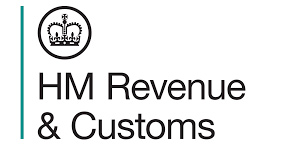HMRC SDLT: SDLT Relief for Relievable Trade: Conditions and Higher Rate Exceptions Explained
SDLT Relief for Relievable Trades
When acquiring a chargeable interest solely for a relievable trade, the 17% higher rate charge does not apply. Instead, Stamp Duty Land Tax (SDLT) is charged at higher rates applicable to additional dwellings purchased by companies and non-individuals. A relievable trade must be commercial and profit-oriented. If certain conditions are not met during the control period, relief may be withdrawn, requiring a further SDLT return and payment.
- Acquisitions for relievable trades avoid the 17% higher rate charge.
- SDLT is charged at higher rates for additional dwellings.
- A relievable trade must be commercial and profit-driven.
- Relief can be withdrawn if conditions change during the control period.
- Further SDLT returns and payments may be required if relief is withdrawn.
“`

Read the original guidance here:
HMRC SDLT: SDLT Relief for Relievable Trade: Conditions and Higher Rate Exceptions Explained
Guidance on SDLT for Relievable Trades
Understanding SDLT and Relievable Trades
Stamp Duty Land Tax (SDLT) is a tax that you may need to pay when you buy a property or land over a certain price. However, there are specific situations where the tax rate can be reduced. One such situation arises when the property is acquired solely for a relievable trade.
What is a Relievable Trade?
A relievable trade is a business run with the intention of making a profit. This means that the trade must be operated on a commercial basis. Here are some key points to understand:
– Commercial Basis: This indicates that the trade should be systematically carried out, with regular transactions and a proper business structure.
– Intention to Profit: The primary goal of the trade should be to earn money, rather than just being a hobby or casual activity.
Higher Rates of SDLT
When purchasing property for a relievable trade, it’s important to note how SDLT is affected. If the property is acquired just for a relievable trade, the 15% higher rate of SDLT typically does not apply.
Instead, the normal SDLT rate will apply, albeit the higher rates which are detailed in the guidance found at SDLTM09835. These rates specifically refer to cases involving additional dwellings purchased by companies or non-individuals.
Control Period Rules
If you take advantage of this SDLT relief, you need to be aware of certain obligations. Specifically, if during what is termed the control period, the rules outlined in SDLTM09660 come into play, this could affect your tax situation.
– Control Period: This is a set timeframe during which specific conditions need to be met. If these conditions are not satisfied, then relief may be withdrawn, leading to a requirement for an additional SDLT return and payment.
Key Concepts Related to SDLT and Relievable Trades
To further clarify how SDLT applies in cases of relievable trades, let’s break down some important concepts:
– Chargeable Interest: This refers to an interest in land that is subject to SDLT. When you purchase property, this is the interest that you hold.
– Transaction: The event of buying the property or land, which must be assessed for SDLT purposes.
Examples of Relievable Trades
Let us review a few examples which might help illustrate what qualifies as a relievable trade.
– Example 1: A company buys a piece of land to develop it into residential properties to sell for profit. This would qualify as a relievable trade because the purchase is made with a clear intention to generate revenue.
– Example 2: A restaurant purchases a commercial building to operate its business. Here, the company is also focused on profit generation, so this transaction is ideal for the SDLT relief.
– Example 3: If an individual buys a property solely to rent out as a long-term investment, this might not qualify as a relievable trade unless it’s run as an established business aimed at profitability.
Application Process for SDLT Relief
If you are engaging in a purchase with the intention of being eligible for SDLT relief for a relievable trade, it’s essential to follow certain steps for the process:
1. Determine Eligibility: Assess whether your trade qualifies as a relievable trade.
2. Complete the SDLT Return: When you submit your SDLT return, make sure to indicate that you are claiming relief based on the nature of your trade.
3. Keep Records: It’s important to keep thorough documentation that proves how your trade operates and demonstrates the commercial aspects.
Consequences of Failing to Comply
If it turns out that you do not meet the necessary criteria for the relievable trade at any point during the control period, there will be consequences:
– Withdrawal of Relief: If your situation changes and you no longer qualify, the tax relief will be revoked.
– Additional SDLT Payment: You will have to calculate and pay any outstanding SDLT that is now due based on the normal rates.
Monitoring and Compliance
Compliance is essential to ensure that you benefit from the SDLT relief:
– Monitor the activities closely and make sure that the purpose of the purchase aligns with the relievable trade definition.
– Regularly evaluate your business structure, and ensure it continues to operate on a commercial basis.
Final Thoughts on SDLT for Relievable Trades
Understanding SDLT and how it applies to relievable trades is critical for those engaging in property transactions. By ensuring compliance with the established rules and maintaining transparency in your business operations, you might take full advantage of the SDLT relief.
Always consider reaching out to a financial advisor or tax specialist who can provide detailed assistance tailored to your specific circumstances and help you navigate the complexities of SDLT.







